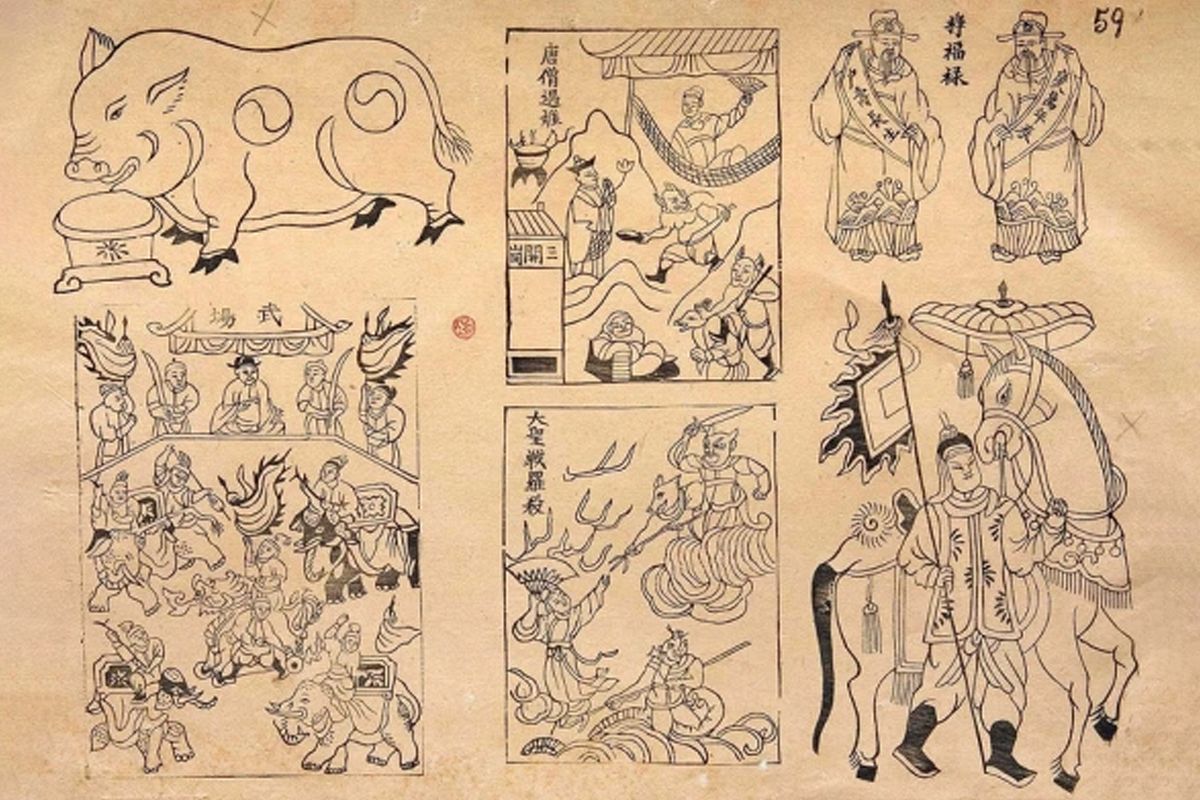"To effectively govern colonial peoples, the foremost requirement is a thorough understanding of the very people one rules over," so believed Paul Doumer, the second Governor-General of French Indochina, who spent his career imposing the imperial French government's agenda on studying the culture of their colonized subjects.
For a considerable period, the French regime institutionalized the study of cultural behavior including language and local customs to better comprehend the workings of colonial societies, and thereby devise methods to control territories and maintain their apparatus more efficiently.
Under this structure, many generations of Western scholars journeyed to explore Vietnamese soil, leaving behind significant works in ethnographic research, some notable works include Henri Gourdon's Arts of Annam or Paul Giran's The Psychology of the Annamite People.

The first page of Mechanics and Crafts of the People of Annam, published in 1908.
Amongst the works emerging from this nascent period of Vietnamese anthropology, Henri Oger's Technique du peuple Annamite, or Mechanics and Crafts of the People of Annam, stands out for its unique insights into the lives of residents in northern Vietnam in the early 20th century. Unlike many of his contemporaries who focused solely on high-culture elements such as art and architecture, Oger ventured into civil engineering practices and traditional customs. His study covered a wide range of topics, including handicraft professions, daily routines, and commonplace objects, demonstrating a comprehensive exploration that extended beyond the realms of the elites.
Instead of relying solely on traditional archival methods based on textual records, he advocated for a graphic approach. Together with a draftsman, he conducted fieldwork throughout Hanoi and its neighboring provinces to sketch various scenes of Vietnamese life at the time.


The data he gathered were later handed over to woodblock printing artisans to be transformed into prints. All drawings were subject to the approval of the local people, and production proceeded only upon their consensus. Each entry typically comprised two parts: an illustration and accompanying annotations in chữ Nôm about it.
The result was over 4,200 illustrations, categorized into four thematic groups: handicrafts using raw materials from nature (fishing, agriculture); the processing of natural materials (metalwork, pottery); handicrafts using processed materials (lacquer painting, stone carving); and the personal and communal activities of Annamites (fortune-telling, folk games).


Thus, not only were the traditional crafts documented, but also the minutiae of everyday life, whether mundane or elaborate — from official attire, ancestral worship customs, and musical instruments, to instances of childbirth on the streets, domestic violence, castration of buffaloes, etc. — were meticulously recorded.
Henri Oger first arrived in Vietnam in 1907 to serve his military enlistment. During his three-year tenure in Hanoi, he was captivated by the distinctive culture of the city's residents. Assigned to an administrative position, he was tasked with studying Vietnamese handicrafts to compile a technical terminology list.


However, instead of merely fulfilling job requirements, Oger ambitiously undertook the long-term project Mechanics and Crafts of the People of Annam to refute the prevalent colonial notion that “advanced techniques in Annam were almost nonexistent or negligible.” His motivation was perhaps as he mentioned in the introduction of his work: “Upon setting foot in Hanoi, I developed a special affection for this land.”
Due to financial constraints, Henri Oger was only able to produce and distribute 60 copies of his book through a printing house he owned. The entire funding came from philanthropists, without support from the government. “The author was compelled to work without assistance from any local scientific institution to gain a deeper understanding of Annam,” he acknowledged in his book.


Oger's pursuit of Mechanics and Crafts of the People of Annam was seen as a challenge by the École française d'Extrême-Orient, or French School of Asian Studies, where he worked, as colonial authorities were skeptical of research that demonstrated an empathetic look towards the Annamite people. Along with the small print run, the work gradually faded from academic and public consciousness in Indochina. Henri Oger returned to France in 1916 and disappeared without a trace in 1936.
The books also became scattered, and only four original copies are known to exist today in libraries in Vietnam and France. Additionally, an unofficial edition containing over 200 pages and 4,000 new drawings never before published is stored at Keio University in Japan, believed to be part of Henri Oger's personal collection, sold by his family after his disappearance.


Only in modern times has Oger's work been recognized by both the French and Vietnamese governments for what it has accomplished: a one-of-its-kind visual dictionary in terms of scale and cultural depth, transcending the constraints and colonial discourse imposed on research at the time. As historian Phan Huy Lê praised: “What's truly commendable about Oger is his departure from western conventions, opting instead to forge a distinctive path rooted in understanding the captivating characteristics of local folk culture.”


The complete archive of Mechanics and Crafts of the People of Annam can be viewed at the U.S Library of Congress.















